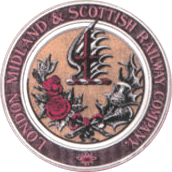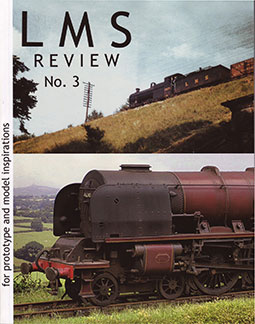LMS Review - Rational
LMS Review will be rather different to what has gone before in the world of railway publishing and it is important to ensure the editorial aims and objectives are fully understood. As I have said on previous occasions there are few advantages of getting older, but one is to be able to look back and say, 'I was there and saw how it was done.' Indeed my railway experience does enable me to comment about how railways were operated in the final years and beyond and also given me the basis for research into the subject.
Talking to modellers it becomes clear that what many seek is clear information about how the railways were operated and the purpose of this book is to set out this information. A good example of lack of understanding is locomotive headlamp codes. Authors often describe trains as 'Van trains', 'Mixed goods trains' etc. Their descriptions are based upon what is behind the tender not what code is displayed at the leading end of the locomotive by the use of the headlamps. Some readers may query the use of models in what is a book devoted to full size railways. This is not new and the use of models to illustrate full size vehicles has been used for many years, in particular with signalling. Those readers who have British Railway Journal No. 4 will find an article entitled 'Some Outstanding 4mm scale Model Wagons' where five pictures of cattle wagons are featured. There is no doubt these models could pass for 'the real thing'.
It has been my view for a long time that in the absence of full size historical examples we should use accurate models but when you visit model railway exhibitions you encounter the strong belief that a 'proper model railway' will have something happening all of the time; sadly this is not true. In 1988 the LMS Society produced a Special LMS Edition to celebrate their 25th Anniversary and one of the articles was written by Vic Forster. Entitled 'Steam Days at Tamworth (Low Level)' it describes the trains than ran over the Up and Down lines on Saturday 7th August 1934. His first observation was from 10.0am and the last train was recorded at 9.27pm. During this time, 11½ hours, he saw 88 trains hauled by 79 different engines of 18 different types. Tamworth is on the Trent Valley line one of the most important and busiest lines in the country, but during this busy day it works out as being one train every 7.84 minutes! The conclusion is simple; if you want something running all the time you will not be able to do this if you seek authentic operation, but there are many ways of creating viewer interest other than by trains running round and round an oval. The purpose of this journal is to show what happened in reality and how that can be created in model form.
These are the simple objectives of this Journal (and mine) which can be summarised as, to promote Authentic Operation.
Bob Essery





